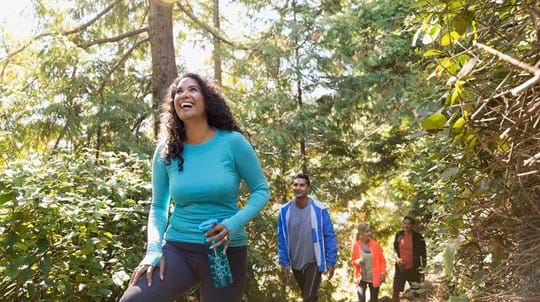
Visiting woods
Walking dogs in our woods
Dogs are welcome for walkies in our woods. Take a look at our tips and guidelines for ensuring we keep our woods safe and special for dogs and wildlife.
Romford

Woodland Trust wood
54.29 ha (134.15 acres)
TQ495942
Explorer 174
OS Landranger 177
Bursting with diverse wildlife, Havering is nestled on a patch of arable land alongside the ancient forest of Hainault – one of the UK's most important historical landscapes, dating as far back as 1130.
This site, situated along a ridge on gently sloping ground, extends over 54 hectares (134 acres) and is a haven for almost 160 bird species and a number of butterflies.
Havering is near Romford in Essex, 12.8km (8 miles) inside the M25 and 6.4km (4 miles) from the M11.
It is in an urban environment with residential areas adjoining the site to the west and a municipal golf course to the east and south.
From Chigwell, head north-east towards High Road/A113. Turn right onto High Road and at the roundabout take the first exit on to Vicarage Lane. Turn left to stay on Vicarage Lane. Then, turn left onto Lambourne Road/B173.
The nearest train station is in Romford, around 10.4km (6.5 miles) from Hainault Forest. The nearest tube station is Grange Hill, 3.3km (2 miles) away.
Visit National Rail for more information.
The nearest bus stop is The Maypole, approximately 1.6km (1 mile) from the wood.
Visit Traveline for more information.
The main car park is located on Lambourne Road, opposite Chigwell Row Primary School. It is only 3.5 miles from Junction 5 of the M11.
There are two fee-paying car parks owned by the London Borough of Redbridge on Fox Burrow Road (off the main Romford Road), as well as two free Woodland Trust car parks along Manor Road on the northern edge of the site. All car parks are open during daylight hours only.
There are toilets with disabled facilities in the Redbridge section of Hainault Forest Country Park.
The diverse habitat here supports a wide range of wildlife.
Birdlife is plentiful here. Keep an eye out for skylark, lapwing, yellow hammer and kestrel as they soar and flap overhead. Hobby can be seen during the summer, and hares are also a common sight.
Take a walk through the vast expanse of grassland, which is home to a fantastic display of butterflies during the warmer months. Look out for a variety of species including ringlet, meadow brown, gatekeeper, marbled white and clouded yellow as they flutter in the breeze.
Explore the many trees at Havering, including oak, ash, hornbeam, field maple, hazel, and a scattering of crab apple, holly and alder.
This n
The area where Havering has grown up was once three arable fields that formed part of the deer park of Havering Palace.
Historically, the site was
The park was closed in the mid-17th century and was farmed continuously until it was purchased by the Woodland Trust. After Havering was acquired in 2006, it was planted with 55,000 trees over a five-year period, in a bid to return it to a more natural state.
This woo

Visiting woods
Dogs are welcome for walkies in our woods. Take a look at our tips and guidelines for ensuring we keep our woods safe and special for dogs and wildlife.

Visiting woods
Taking a walk in the woods is the easiest way to enjoy the outdoors and get closer to nature.

This wood is just one of many to have been protected by gifts in wills, securing it for generations to come. Your legacy gift could also make a real difference to woods, trees and wildlife.
Learn what your gift could mean